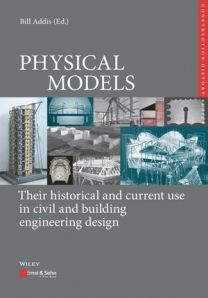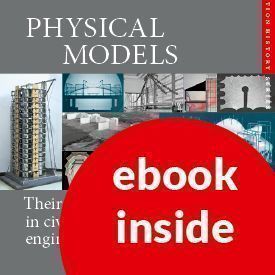Rezension von Vladimir Korensky, M.Sc. (BTU Cottbus-Senftenberg), in: „Mauerwerk“ 26 (2022), H. 1, S. 45-46
„Das Thema wird umfassend sowohl hinsichtlich praktischer – anhand mehrerer Fallbeispiele – als auch theoretischer Aspekte behandelt und stellt somit für diesen Themenbereich ein wichtiges Werk zur Bautechnikgeschichte dar.“
Rezension von Prof. Dr. Wolfgang König, in: Technikgeschichte, 90 (2023), H. 4, S. 339-340
„Wenn man die Mühe nicht scheut, sich durch die über 1000 Seiten oder zumindest durch größere Teile zu arbeiten, wird man mit zahlreichen Informationen und Einblicken belohnt. Man entwickelt ein durch reichhaltiges empirisches Material unterstütztes Gefühl dafür, welche Bedeutung Modelle in der Bautechnik besessen haben und welche Stärken und Schwächen sie besitzen.“
Rezension von Prof. Dr. David F. Channell (University of Dallas, Texas) in „Technology and Culture“ 63, Nr 4 (2022), S.1250-1251
„The book is well organized, first focusing on historical time periods and then on specific design projects such as Filippo Brunelleschi’s design of the dome of Florence Cathedral, Leonhard Euler’s model for a bridge in St. Petersburg, the models used in the Conway and Britannia tubular bridges in Great Britain, and the use of models in the design of the Boulder Dam.“
Rezension von Vladimir Korensky, M.Sc. (BTU Cottbus-Senftenberg), in „Construction History“ 37 (2022), No. 1, pp. 133-134
„Altogether, the work provides a comprehensive compilation of the history of the development of physical models in various countries from ancient times to the present.“
Rezension von Prof. Dr. Santiago Huerta (Madrid), in „Revista de Historia de la Construcción“, 1 (2021), Vol. 1, pp. 140-143
„Die Print-Version des Buches ist ihr Geld wert. Das Buch ist hervorragend gedruckt und die fast 900 Abbildungen exzellent reproduziert.“
Review by em. Prof. Dr.-Ing. Hans-Wolf Reinhardt in „Steel Construction“ 14/2021 (No. 4, pp. 292-293)
„The 39 individual chapters of the book have been compiled by 31 specialist authors, seven of them by the exceptionally accomplished editor. One particular appeal of the book is the shear variety of topics covered, making it both a useful source of information and a good read.“
Rezension von em. Prof. Dr.-Ing. Hans-Wolf Reinhardt, in „RILEM News“ (16. Nov. 2021)
„This is the first time that the full spectrum of modelling has been covered in a single book, as Werner Sobek states in his foreword. Editors of the Construction History Series Karl-Eugen Kurrer and Werner Lorenz can count themselves very fortunate to have signed up such a leading authority as Bill Addis.“
Rezension von Dipl.-Ing. Eberhard Pelke in „Bautechnik” 98 (2021, H. 6, S. 459-461)
„Gemeinsam mit seinen 29 Koautoren gelingt Bill Addis, ein Standardwerk vorzulegen, das lange Zeit Bestand haben wird. Unterstützt wird der Leser durch die gewohnt feine Aufbereitung des Buches durch den Verlag Ernst & Sohn (...). Das Buch kann praktizierenden Ingenieuren als Wissensspeicher für fordernde Projekte im nicht normierten Raum und allen (Bau-)Technikgeschichtlern zur Neujustierung von Horizont und Raum ihrer Disziplin wärmsten empfohlen werden.”
Rezension von em. Prof. Dr.-Ing. Hans-Wolf Reinhardt in:
- „Bautechnik“ ( vol. 98/2021, H. 11, S. 903-904 )
- „Beton- und Stahlbetonbau“ (116 /2021, H. 11, S. 920-921)
- „Stahlbau“ (90/2021, H. 11, S. 844-845)
- Bauphysik (43/2021, H. 6, S. 419-420)
„Es ist zu wünschen, dass das Buch reiche Verbreitung findet, denn es gehört in jede Fachbibliothek, aber auch in die Privatbibliothek architektonisch, bautechnisch und wissenschaftlich interessierter Personen.“
- Rezension von em. Prof. Dr.-Ing. Hans-Wolf Reinhardt in Beton- und Stahlbetonbau 116 (2021), H. 11, S. 920-921
- Rezension von em. Prof. Dr.-Ing. Hans-Wolf Reinhardt in Stahlbau 90 (2021), H. 11, S. 844-845
- Rezension von em. Prof. Dr.-Ing. Hans-Wolf Reinhardt in „Bautechnik“ ( vol. 98/2021, H. 11, S. 903-904 )
- Rezension von em.Prof.dr.-ing. Hans-Wolf Reinhardt in Bauphysik 43/2021,H.6, S.419-420.pdf
Rezension von Prof. dr hab. inż. Zbigniew Cywiński in „Inżynieria i Budownictwo“, (3/2021 S. III)
„Das Buch ist eine großartige Aufsatzsammlung renommierter Ingenieure und Architekten über den Einsatz maßstabsgetreuer Modellversuche im Bauwesen. Es basiert auf einer fundierten Analyse der Quellen und ist ein hervorragendes Werk über die Geschichte der Modellversuche.“
Rezension von Prof. dr hab. inż. Zbigniew Cywiński in „Archives of Civil Engineering“ (Vol. 67, 2021)
„...the book can be greatly recommended worldwide to specialists of civil, structural, and architectural engineering including those in Poland.“



